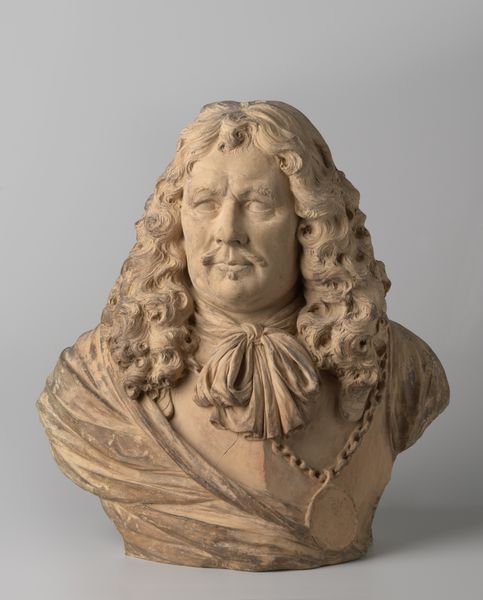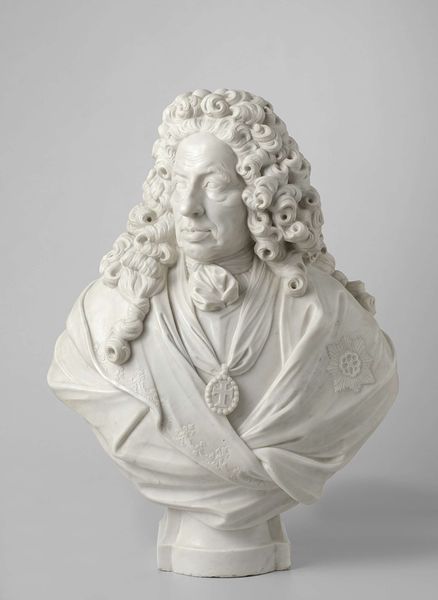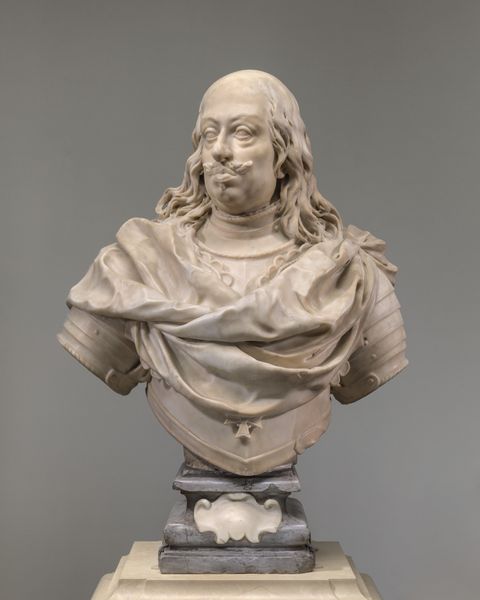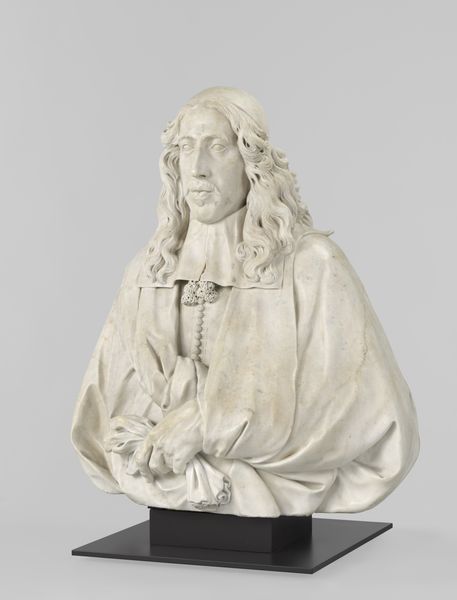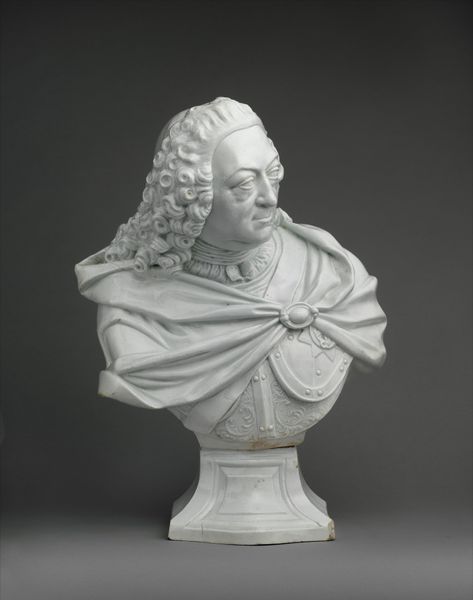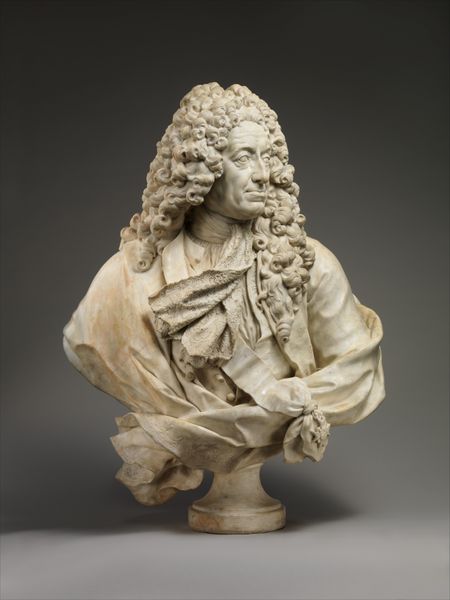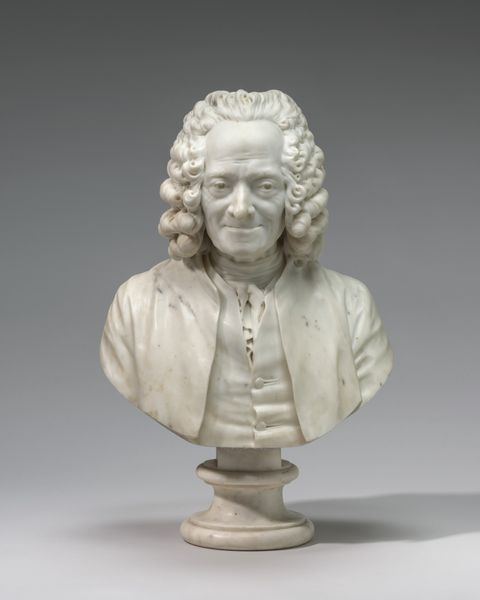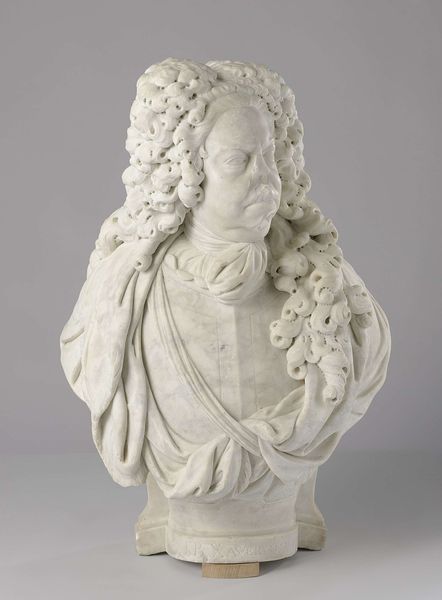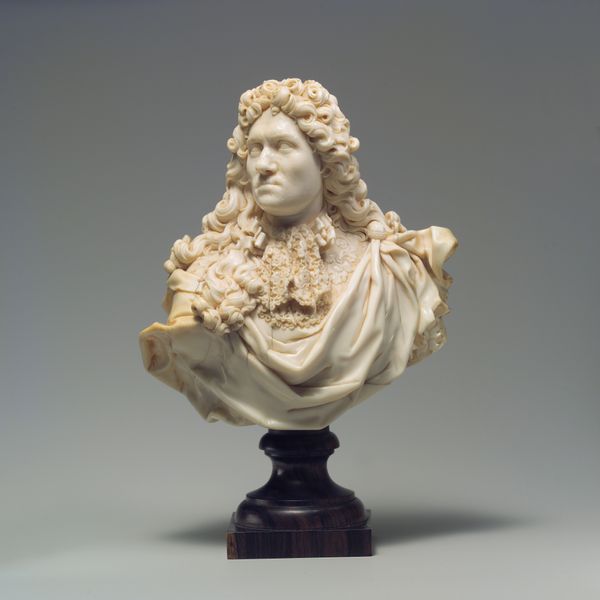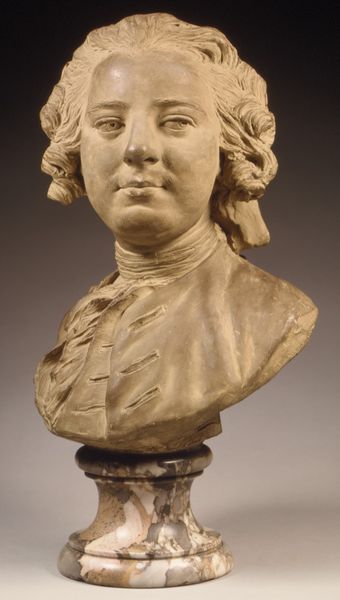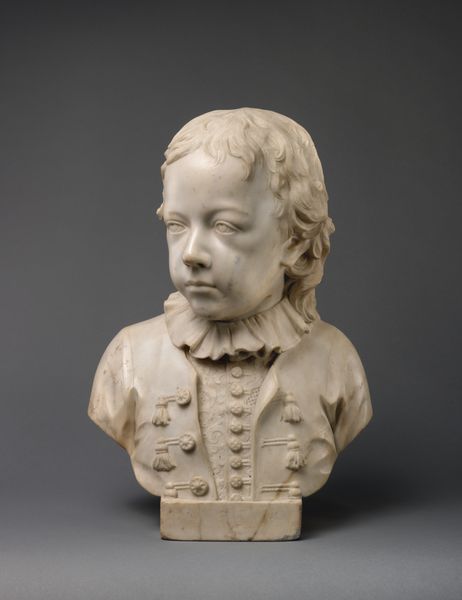
metal, bronze, sculpture, marble
#
portrait
#
baroque
#
metal
#
sculpture
#
bronze
#
sculpture
#
marble
Dimensions: height 55 cm, width 53 cm, depth 35 cm
Copyright: Rijks Museum: Open Domain
This is Rombout Verhulst’s Portrait of Jacob van Reygersbergh, made from terracotta in the 17th century. Terracotta, meaning ‘baked earth’ in Italian, is a humble material. But in the hands of a skilled sculptor like Verhulst, it could powerfully evoke human presence. Note the fine texture he’s achieved in the hair and lace collar, a stark contrast to the smooth skin of the face. Verhulst was one of the leading sculptors in the Dutch Republic, and terracotta was his specialty. Unlike marble, which had to be imported, terracotta was locally sourced and relatively inexpensive. This made it an ideal material for portrait busts, which were increasingly popular among the Dutch merchant class. In this way, the material itself speaks to the social context of the work, reflecting a shift away from aristocratic patronage and towards a more bourgeois art market. The very act of modeling in clay, rather than carving stone, suggests a new informality. By emphasizing process and materiality, Verhulst blurred the lines between craft and fine art.
Comments
rijksmuseum about 2 years ago
⋮
The status of terracotta statuary is not always clear. At times it can be a preparatory sketch, and at others a detailed study for a stone sculpture. Yet it can also be a fully-fledged final product, less expensive than a statue carved in stone. This sensitive portrait of the Zeeland regent Jacob van Reygersbergh was both a model for a marble bust and an independent work of art.
Join the conversation
Join millions of artists and users on Artera today and experience the ultimate creative platform.
